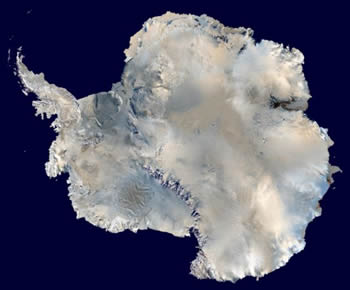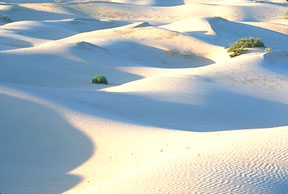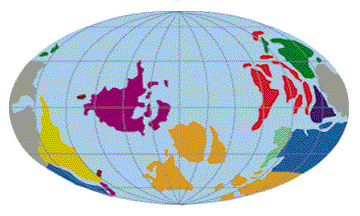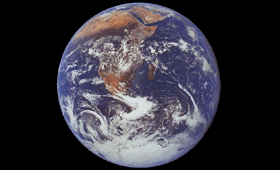Click on image for full size
Image courtesy of the U.S. Natl. Park Service, photograph by Al Mebane.
Extremophiles
Some environments are not good homes for most "normal" kinds of life. Places like that are called extreme environments. That doesn't mean that there isn't any life in extreme environments. Certain creatures can live and grow in extreme environments. Scientists have a special name for creatures that live in extreme environments. They are called "extremophiles". The "-phile" in extremophile comes from a Greek word that means "love". Extremophiles are creatures that love extreme environments
Most extremophiles are microbes. There are also a few types of larger creatures, like special types of shrimp and insects, which are also extremophiles. In the last few decades scientists have found extremophiles in places where they used to think life couldn't survive. Some extremophiles live in very hot or very cold environments. Others live in environments that have acids or radiation in them.
When Earth was young, most environments on our planet were extreme compared to today. Environments on many other planets and moons within our Solar System and beyond are also extreme. Scientists hope that studying extremophiles will help us learn about early life on Earth and about evolution. They also hope we can learn about the chances for life on other planets by studying extremophiles. Scientists who study these sorts of things are called astrobiologists.
Scientists use special names for extremophiles that live in different environments. Thermophiles live in hot places. Acidophiles can put up with strong acids. Xerophiles live in deserts and other dry places. Halophiles like it salty, while cryophiles (or psychrophiles) love the cold. Some creatures are extreme in more than one way. Microbes that live in acidic hot springs are both thermophiles and acidophiles.
A few big big animals and plants also survive in really extreme environments. While they aren't exactly extremophiles, some of them do live in places that would kill most normal creatures. Camels can go for long periods without water in the dry deserts where they live. Emperor penguins somehow make it through cold Antarctic winters. Extreme plants, such as many types of cactus, also live in the heat and dryness of deserts. Strange tube worms grow in boiling hot water filled with strange chemicals near deep sea hydrothermal vents.














